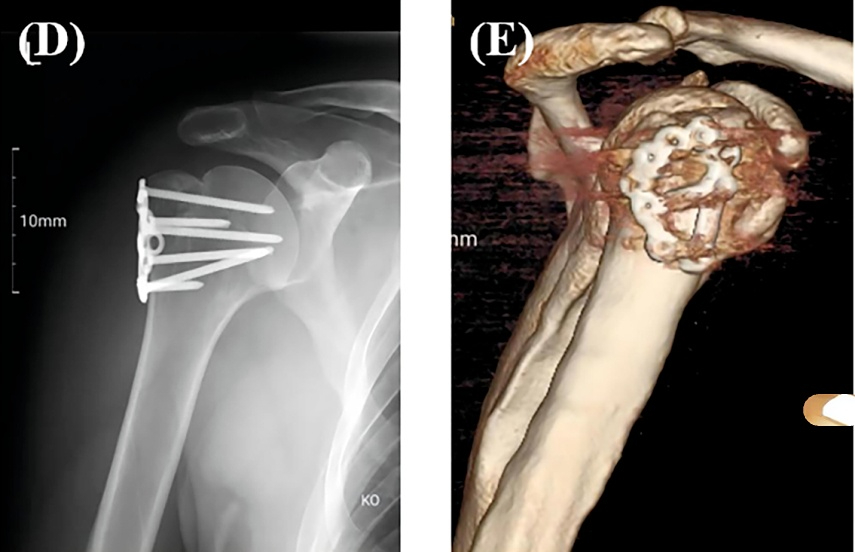Humeral tuberosity fracture is a common shoulder injury in clinical practice, often accompanied by shoulder dislocation. For split and displaced humeral tuberosity fractures, surgical treatment to restore normal proximal humeral bone anatomy and reconstruct the shoulder lever arm is the basis for shoulder function recovery. Humeral tuberosity anatomical plate, proximal humeral anatomical plate (PHILOS), screw fixation or anchor tension band fixation are all common in clinical practice.

It is common to flexibly apply the anatomical plate used for internal fixation of a certain fracture to other fracture sites in the internal fixation treatment of fractures. For example, the distal femoral LISS plate is inverted to treat proximal femoral fractures, and the metacarpal plate is used to fix radial head and tibial plateau fractures. For fractures of the greater tuberosity of the humerus, doctors from Lishui People’s Hospital (the Sixth Affiliated Hospital of Wenzhou Medical University) considered the unique advantages of the calcaneal anatomical plate in plasticity and internal fixation stability, and applied it to the proximal humerus, with definite results reported:


▲ The picture shows anatomical plates of different sizes on the calcaneus. This type of plate has high toughness and plasticity, and can be attached to the bone surface with screws.
Typical case pictures:


In the article, the author compared the efficacy of calcaneal anatomical plate and PHILOS internal fixation. The results showed that the calcaneal anatomical plate has advantages in shoulder joint function recovery, surgical incision length and surgical bleeding.
The use of anatomical plates for fractures in a certain part for fractures in other parts is actually a gray area in clinical practice. If related complications occur, it may be necessary to pursue the question of whether the choice of internal fixation is appropriate. For example, LISS plate inversion for the treatment of proximal femoral fractures has been widely used in a short period of time, but internal fixation has also caused many complications of failure, so there are also many disputes. Therefore, the internal fixation methods introduced in this article are for clinicians to reference. It is not recommended.
[Statement]: The concepts, technologies, and principles shared on this platform are all publicly available journals, published books, or online platform materials. The copyright belongs to the original author. The platform only organizes, summarizes, and shares them for learning reference. This platform is not responsible for the authenticity of the content and the effectiveness of the technology. The related medical behaviors generated based on the content pushed by this platform have nothing to do with the platform. Please choose carefully. If there is any infringement, please contact us to delete it.
Welcome to share, forward, and like the article in the lower right corner!




